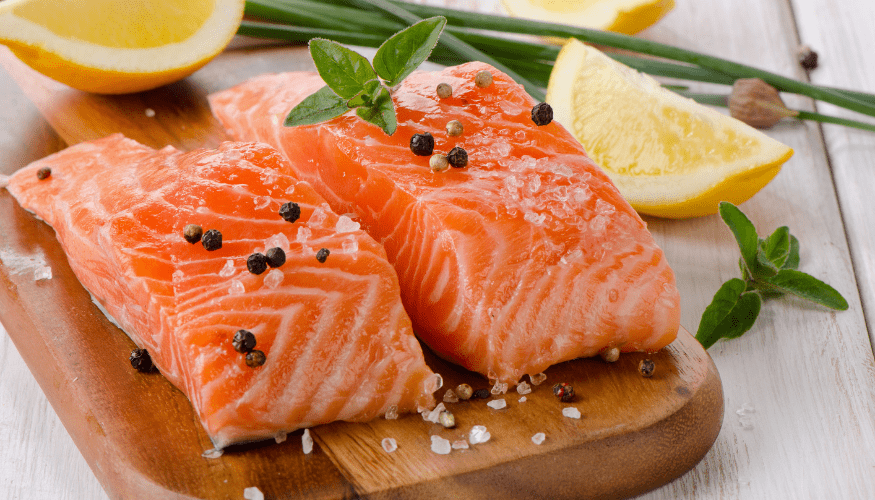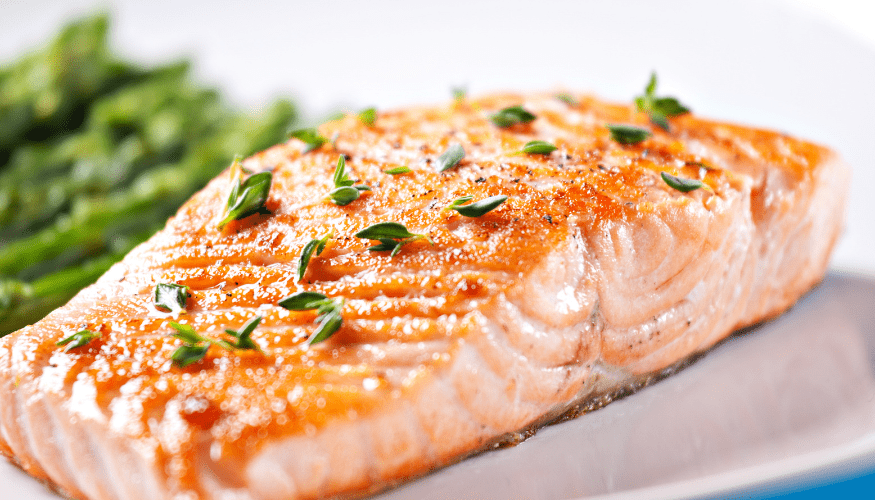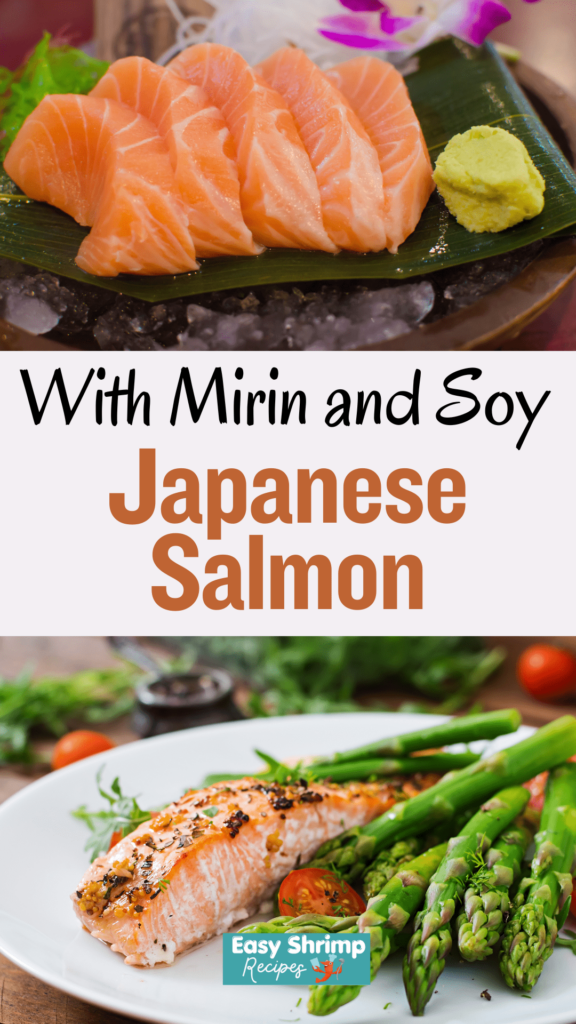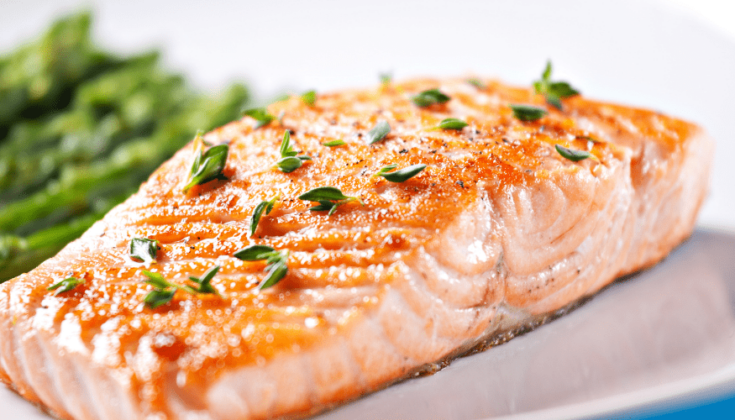Japanese salmon recipe brings a perfect blend of savory and sweet flavors, with tender, flaky salmon glazed in a delicious soy-based sauce. Marinated with ginger, garlic, and a touch of mirin, it’s then seared to crispy perfection. Served with steamed rice and a sprinkle of sesame seeds.

What is Japanese Salmon?
Japanese Salmon, also known as Sake in Japanese, is a dish that celebrates the natural flavors of the fish while incorporating the essential elements of Japanese cooking: balance, simplicity, and freshness. Typically, the salmon is marinated in a blend of soy sauce, mirin, sake, and sugar—ingredients that create a harmony of sweet, salty, and savory flavors. Grilled or broiled, the fish takes on a delicate, slightly caramelized crust while maintaining its buttery, melt-in-your-mouth interior.
Ingredients You’ll Need
To make this recipe, you’ll need:
- Fresh Salmon Fillets – Look for high-quality, fresh salmon from a trusted fishmonger. You can also use frozen salmon if fresh isn’t available.
- Soy Sauce – A key component in the marinade that gives the salmon its signature salty umami flavor.
- Mirin – This sweet rice wine adds a touch of sweetness to balance the soy sauce and enhance the overall flavor.
- Sake – A Japanese rice wine that imparts a subtle depth and complexity to the dish.
- Sugar – A pinch of sugar helps balance out the savory elements, creating a harmonious blend of flavors.
- Sesame Oil (optional) – Adds a nutty aroma and flavor.
- Fresh Ginger – A little zing from ginger will give your salmon an extra layer of complexity.
- Green Onions – For garnish, adding a fresh bite and color to the dish.
Tips and Tricks for the Perfect Japanese Salmon
- Don’t Overcook: Salmon is best when cooked to the point where it’s just opaque and flakes easily. Overcooking can cause it to become dry and less flavorful.
- Rest the Salmon: After cooking, let your salmon rest for a couple of minutes. This allows the juices to redistribute, making it even more tender.
- Marinate Longer for Deeper Flavor: If you have more time, marinate the salmon for up to 2 hours to infuse the flavors more deeply. However, don’t marinate for too long as the fish may break down and become mushy.
- Use Fresh Ginger: Fresh ginger makes all the difference. While ground ginger can be used in a pinch, the vibrant flavor of fresh ginger is ideal for this recipe.

Variations of Japanese Salmon
- Teriyaki Salmon: For a sweeter flavor, marinate the salmon in a teriyaki sauce instead of the traditional soy-mirin-sake mixture. It gives the fish a glossy, sticky glaze that’s irresistible.
- Miso-Glazed Salmon: If you want to add a bit of savory umami to your salmon, try glazing it with a miso paste before grilling or broiling.
- Spicy Salmon: Add a touch of chili flakes or spicy miso paste to your marinade for a bit of heat. This is perfect if you love a spicy kick to your meals.
- Salmon Sushi: For a lighter take, slice the salmon into thin pieces and serve it on a bed of sushi rice, with a drizzle of soy sauce, sesame seeds, and a dash of wasabi.
How to Serve Japanese Salmon
- With Rice: Serve your salmon over a bed of fluffy steamed rice, a classic combination that soaks up the delicious marinade and makes for a well-rounded meal.
- With Vegetables: Pair the salmon with some lightly sautéed vegetables such as bok choy, asparagus, or baby spinach for a nutritious, balanced plate.
- As Part of a Bento Box: This dish works wonderfully as part of a bento box. Include some pickled vegetables, a boiled egg, and a portion of rice for a well-balanced Japanese-inspired lunch.
- With Noodles: Try serving the salmon alongside soba or udon noodles for a satisfying meal. The noodles can be dressed with a light soy-based sauce to complement the fish.
How to Store Japanese Salmon
If you have any leftovers, store them in an airtight container in the refrigerator. The cooked salmon will keep for 2-3 days. However, for the best flavor and texture, it’s recommended to enjoy it on the same day you cook it. To reheat, gently warm the salmon in the oven or microwave, but avoid overcooking it again.

Recipe FAQs
Can I use frozen salmon for this recipe? Yes, you can absolutely use frozen salmon for this dish. Make sure to thaw it thoroughly before marinating and cooking. The texture may not be as tender as fresh salmon, but it will still taste great.
Can I make the marinade in advance? Yes, the marinade can be prepared ahead of time and stored in the refrigerator for up to a week. This makes meal prep a breeze, and the flavors will only intensify as it sits.
How do I know when my salmon is cooked? Salmon is done when it turns opaque and flakes easily with a fork. You can also use a meat thermometer to check that the internal temperature reaches 145°F (63°C).
What type of salmon is best for this recipe? Wild-caught salmon is ideal for its firm texture and rich flavor. If wild-caught is unavailable, farmed salmon will also work well, though it tends to be fattier.
Japanese Salmon

Japanese salmon recipe brings a perfect blend of savory and sweet flavors, with tender, flaky salmon glazed in a delicious soy-based sauce.
Ingredients
- 2 salmon fillets (5 oz each)
- 1 tbsp soy sauce
- 3 tbsp mirin
- 1 tbsp sake
- 1/2 tbsp oil
Instructions
- In a ziplock bag, combine the soy sauce, mirin, sake, and salmon fillets. Seal the bag, removing as much air as possible, and marinate overnight (or at least 3 hours).
- Heat 1/2 tbsp oil in a non-stick pan over medium heat. Add the salmon, skin-side down, and cook for 2-3 minutes until the skin is crispy. If the skin is cooking too fast, lower the heat or briefly remove the pan from the stove.
- Drizzle the remaining marinade over the salmon flesh side, then flip and cook for another 2 minutes (or to your preferred doneness). I recommend medium-rare for a moist and tender inside.
- Let the salmon rest for a couple of minutes, as it will continue to cook slightly. Serve and enjoy!
Nutrition Information
Yield
2Serving Size
1Amount Per Serving Calories 566Total Fat 32gSaturated Fat 6gTrans Fat 0gUnsaturated Fat 23gCholesterol 143mgSodium 578mgCarbohydrates 11gFiber 0gSugar 10gProtein 51g
Easy Shrimp Recipes.com, occasionally offers nutritional information for recipes contained on this site. This information is provided as a courtesy and is an estimate only. This information comes from online calculators. Although allchickenrecipes.com attempts to provide accurate nutritional information, these figures are only estimates.
Final Thoughts
Japanese Salmon is a delicious and versatile dish that’s perfect for any occasion. With its perfect balance of savory, sweet, and umami flavors, it’s a great way to incorporate more fish into your diet while enjoying the rich culinary tradition of Japan. Whether you’re grilling, broiling, or pan-searing, this recipe is sure to impress and become a staple in your cooking routine. So, grab your fresh salmon and get ready to enjoy an easy, flavorful, and wholesome dish that will transport you straight to Japan with every bite.
Check my other salmon recipes:

